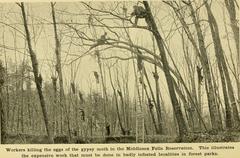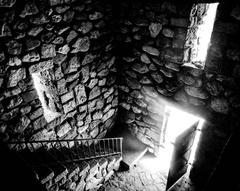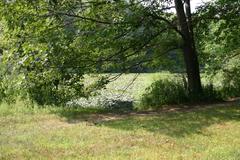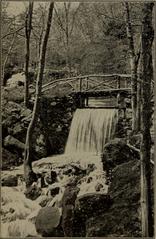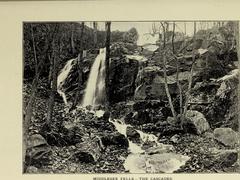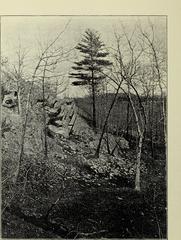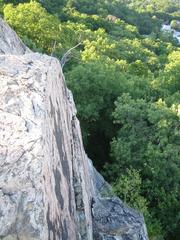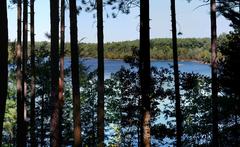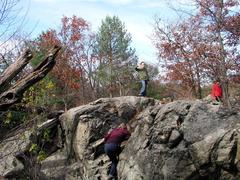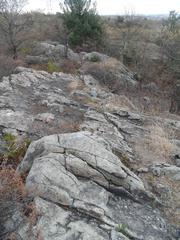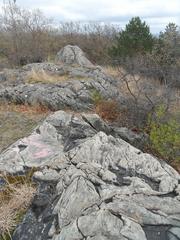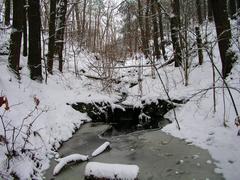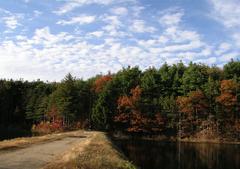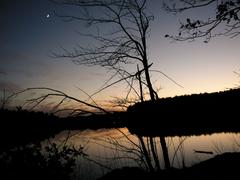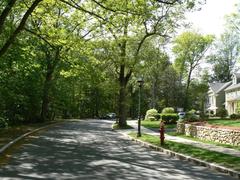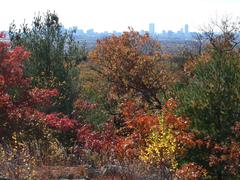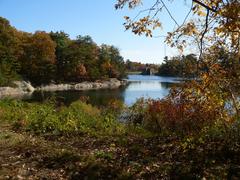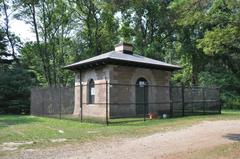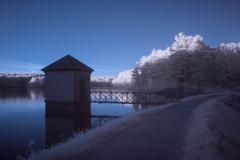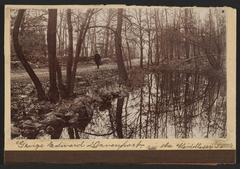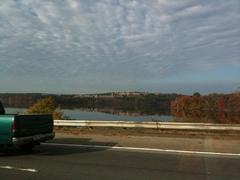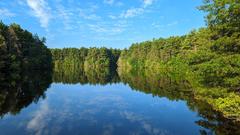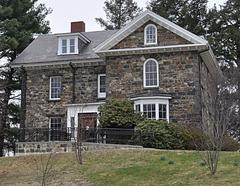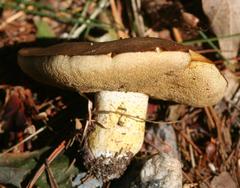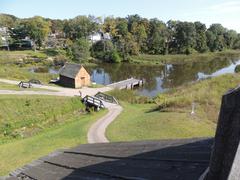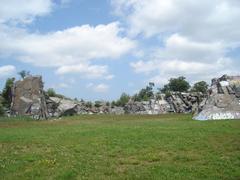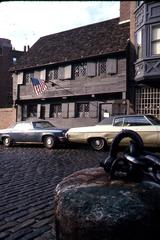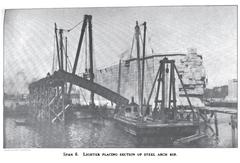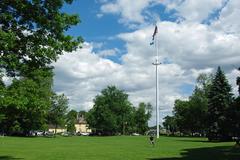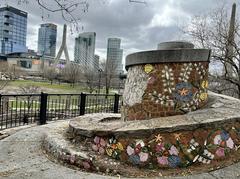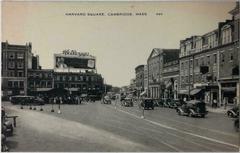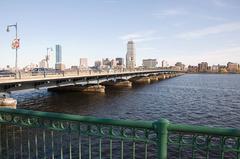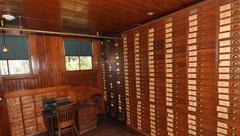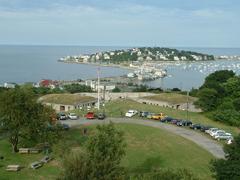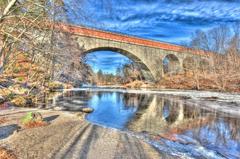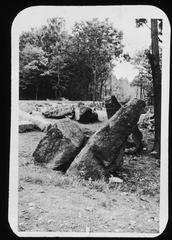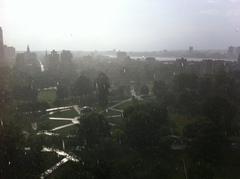
Comprehensive Guide to Visiting Historical Sites in Boston
Date: 18/07/2024
Introduction
Interstate 93 (I-93) is a significant artery that weaves through the historical and cultural fabric of Boston and beyond. This comprehensive guide explores the evolution of I-93, from its inception as the Central Artery to the transformative Big Dig project. The history of I-93 dates back to the 1940s, when urban planner Robert Moses proposed an elevated highway to alleviate traffic congestion (source). Officially part of I-93 in 1957, the Central Artery initially succeeded in easing traffic but also disrupted neighborhoods and separated the waterfront from downtown Boston (source). By the late 20th century, the elevated highway had become synonymous with traffic jams and decaying infrastructure, leading to the ambitious Big Dig project (source). Completed in 2007, the Big Dig revolutionized Boston’s landscape, replacing the elevated highway with an underground tunnel and creating open spaces like the Rose Fitzgerald Kennedy Greenway (source). Today, I-93 is more than just a highway; it is a testament to the complex interplay between urban development and community impact. This guide delves into the historical significance, visitor tips, and nearby attractions associated with I-93, ensuring a well-rounded understanding of this pivotal infrastructure.
Table of Contents
- [The Fascinating History of I-93 in Boston](#the-fascinating-history-of-i-93-in-bostonthe-fascinating-history-of-i-93-in-boston)
- [Early Developments and the Birth of the Central Artery](#early-developments-and-the-birth-of-the-central-arteryearly-developments-and-the-birth-of-the-central-artery)
- [A City Divided - The Impacts of the Central Artery](#a-city-divided---the-impacts-of-the-central-arterya-city-divided---the-impacts-of-the-central-artery)
- [The Big Dig - A City Transformed](#the-big-dig---a-city-transformedthe-big-dig---a-city-transformed)
- [I-93 Today - A Legacy of Change](#i-93-today---a-legacy-of-changei-93-today---a-legacy-of-change)
- [I-93 and Boston’s Future](#i-93-and-bostons-futurei-93-and-bostons-future)
- [Visitor Information and Nearby Attractions](#visitor-information-and-nearby-attractionsvisitor-information-and-nearby-attractions)
- [Special Events and Guided Tours](#special-events-and-guided-toursspecial-events-and-guided-tours)
- [FAQ](#faqfaq)
- [Exploring the Freedom Trail in Boston](#exploring-the-freedom-trail-in-bostonexploring-the-freedom-trail-in-boston)
- [History and Cultural Significance](#history-and-cultural-significancehistory-and-cultural-significance)
- [Visitor Information](#visitor-informationvisitor-information)
- [Ticket Prices](#ticket-pricesticket-prices)
- [Opening Hours](#opening-hoursopening-hours)
- [Travel Tips](#travel-tipstravel-tips)
- [Nearby Attractions](#nearby-attractionsnearby-attractions)
- [Accessibility](#accessibilityaccessibility)
- [Special Events and Guided Tours](#special-events-and-guided-toursspecial-events-and-guided-tours)
- [Photographic Spots](#photographic-spotsphotographic-spots)
- [FAQ](#faqfaq)
- [Top Attractions and Travel Tips for Visitors Driving on I-93](#top-attractions-and-travel-tips-for-visitors-driving-on-i-93top-attractions-and-travel-tips-for-visitors-driving-on-i-93)
- [Historical Sites and Cultural Landmarks](#historical-sites-and-cultural-landmarkshistorical-sites-and-cultural-landmarks)
- [Boston Common (Boston, MA)](#boston-common-boston-maboston-common-boston-ma)
- [New Hampshire State House (Concord, NH)](#new-hampshire-state-house-concord-nhnew-hampshire-state-house-concord-nh)
- [Natural Attractions and Outdoor Activities](#natural-attractions-and-outdoor-activitiesnatural-attractions-and-outdoor-activities)
- [White Mountain National Forest (Lincoln, NH)](#white-mountain-national-forest-lincoln-nhwhite-mountain-national-forest-lincoln-nh)
- [Franconia Notch State Park (Franconia, NH)](#franconia-notch-state-park-franconia-nhfranconia-notch-state-park-franconia-nh)
- [Travel Tips](#travel-tipstravel-tips)
- [Nearby Attractions](#nearby-attractionsnearby-attractions)
- [Salem Witch Museum (Salem, MA)](#salem-witch-museum-salem-masalem-witch-museum-salem-ma)
- [The Mount Washington Cog Railway (Bretton Woods, NH)](#the-mount-washington-cog-railway-bretton-woods-nhthe-mount-washington-cog-railway-bretton-woods-nh)
- [Accessibility](#accessibilityaccessibility-1)
- [FAQ](#faqfaq-1)
- [Stay Updated](#stay-updatedstay-updated)
- [Historical Sites and Cultural Landmarks](#historical-sites-and-cultural-landmarkshistorical-sites-and-cultural-landmarks)
- [Conclusion](#conclusionconclusion)
- [References](#referencesreferences)
The Fascinating History of I-93 in Boston
Boston, a city renowned for its rich historical tapestry, also tells an intriguing story through its infrastructure, notably the I-93. This highway, particularly the Central Artery segment, has played a pivotal role in shaping the city’s urban landscape and development. In this article, we explore the history, impact, and transformation of I-93 in Boston.
Early Developments and the Birth of the Central Artery
The history of I-93 in Boston dates back to the 1940s, a time when traffic congestion was becoming a significant issue. Urban planner Robert Moses proposed an elevated highway to relieve the growing strain on Boston’s streets. This vision materialized in the 1950s as the Central Artery, a six-lane elevated highway designated as part of I-93 in 1957. The highway connected key points in the city, including the Sumner Tunnel and the Mystic River Bridge.
A City Divided - The Impacts of the Central Artery
While the Central Artery initially eased traffic congestion, its construction had profound impacts on Boston’s neighborhoods. The elevated structure displaced residents and businesses, creating a physical and psychological barrier within the city. The once-bustling waterfront was isolated from downtown, and the areas beneath the highway were left in its shadow.
The Big Dig - A City Transformed
By the late 20th century, the Central Artery had become synonymous with traffic jams and decaying infrastructure. This led to the launch of the Big Dig, formally known as the Central Artery/Tunnel Project (CA/T). Initiated in 1991 and completed in 2007, this ambitious project aimed to reduce congestion and reconnect the city by relocating the Central Artery underground.
I-93 Today - A Legacy of Change
The completion of the Big Dig transformed Boston’s landscape. The removal of the elevated highway created vast open spaces, leading to the development of the Rose Fitzgerald Kennedy Greenway, a vibrant park system at the city’s core. The project also included the construction of the Ted Williams Tunnel, which improved connectivity between South Boston and Logan International Airport.
I-93 and Boston’s Future
Today, I-93 remains a crucial artery for Boston, handling thousands of vehicles daily. Its history highlights the significant impact infrastructure projects can have on a city’s fabric. As Boston continues to grow, the lessons learned from I-93’s evolution will shape future urban planning efforts, emphasizing the need to balance transportation needs with community preservation and quality of life.
Visitor Information and Nearby Attractions
For those interested in exploring the areas influenced by I-93, there are several attractions worth visiting. The Rose Fitzgerald Kennedy Greenway offers a beautiful urban park experience. Additionally, visitors can explore the Boston Harborwalk, which provides scenic views of the waterfront, or take a historical tour of the North End, known for its rich cultural heritage.
Special Events and Guided Tours
Boston frequently hosts events and guided tours that delve into the history of its infrastructure, including I-93. These tours offer unique insights into the city’s evolution and the transformative impact of projects like the Big Dig. Check local listings for current offerings and schedules.
FAQ
Q - What was the Central Artery?
A - The Central Artery was a six-lane elevated highway in Boston, part of I-93, constructed in the 1950s to alleviate traffic congestion.
Q - What is the Big Dig?
A - The Big Dig, officially known as the Central Artery/Tunnel Project (CA/T), was a large-scale project to relocate the Central Artery underground, completed in 2007.
Q - How has the Big Dig changed Boston?
A - The Big Dig transformed Boston by removing the elevated highway, creating open spaces like the Rose Fitzgerald Kennedy Greenway, and improving traffic flow with new tunnels.
Q - Can I visit areas influenced by I-93?
A - Yes, visitors can explore several attractions near I-93, including the Greenway, Boston Harborwalk, and historical sites in the North End.
Stay Up to Date
To learn more about Boston’s history and infrastructure, download our mobile app Audiala, check out related posts on our website, and follow us on social media for the latest updates.
Exploring the Freedom Trail in Boston
Introduction
Have you ever wondered what it was like to walk in the footsteps of America’s founding fathers? The Freedom Trail in Boston offers a unique opportunity to explore the rich history and cultural significance of the city. This 2.5-mile-long path takes you through 16 historical sites, each offering a glimpse into the past. Whether you’re a history buff or a casual tourist, the Freedom Trail is a must-visit.
History and Cultural Significance
The Freedom Trail was established in 1951 and has since become one of Boston’s most iconic attractions. The trail is marked with a red line, either painted or embedded in the sidewalk, guiding visitors through important landmarks such as the Massachusetts State House, Paul Revere’s House, and the Old North Church. Each site along the trail has its own story, contributing to the collective narrative of America’s fight for independence.
Visitor Information
Ticket Prices
Many of the sites along the Freedom Trail are free to visit, although some may have a small admission fee. For those interested in a guided tour, various companies offer walking tours with prices ranging from $14 to $25 per person.
Opening Hours
The Freedom Trail itself is accessible 24/7, but individual sites have their own operating hours. It’s advisable to check the official websites of each landmark for the most up-to-date information.
Travel Tips
- Comfortable Footwear: The trail is 2.5 miles long, so make sure to wear comfortable shoes.
- Weather Preparedness: Boston’s weather can be unpredictable. Carry an umbrella or a hat depending on the season.
- Maps and Guides: Pick up a Freedom Trail map at the Boston Common Visitor Information Center or download one online.
Nearby Attractions
While walking the Freedom Trail, you’ll be in close proximity to other Boston attractions. Consider visiting the Boston Tea Party Ships & Museum, Faneuil Hall Marketplace, and the New England Aquarium.
Accessibility
The Freedom Trail is accessible to people of all abilities. Most of the trail is wheelchair accessible, although some historical sites may have limitations. It’s best to check accessibility information on individual sites’ websites.
Special Events and Guided Tours
Throughout the year, various special events and guided tours are offered along the Freedom Trail. Check the official Freedom Trail website or local tourism boards for the latest information on events like historical reenactments and themed tours.
Photographic Spots
The Freedom Trail offers numerous picturesque spots perfect for photography. Capture the iconic Massachusetts State House, the historic Paul Revere’s House, and the scenic views from Bunker Hill Monument.
FAQ
Q - How long does it take to walk the Freedom Trail?
A - On average, it takes about 2-3 hours to walk the entire trail, depending on how long you spend at each site.
Q - Is the Freedom Trail suitable for children?
A - Yes, the Freedom Trail is family-friendly and educational, making it a great outing for children.
Q - Are there guided tours available?
A - Yes, several companies offer guided tours that provide in-depth historical context and stories.
Q - Can I visit the Freedom Trail year-round?
A - Yes, the Freedom Trail is open year-round, but some individual sites may have seasonal hours.
Top Attractions and Travel Tips for Visitors Driving on I-93
Driving on I-93 offers a scenic and historic journey through some of New England’s most captivating landscapes and landmarks. This guide will help you discover the top attractions along I-93, provide essential visitor tips, and ensure you have a memorable trip.
Historical Sites and Cultural Landmarks
Boston Common (Boston, MA)
- Visiting Hours: Open daily from 6:00 AM to 11:00 PM
- Tickets: Free entry
- Overview: As America’s oldest public park, Boston Common is a historic gem. Enjoy a leisurely walk, visit the Frog Pond, or join one of the guided tours to learn about its rich history.
New Hampshire State House (Concord, NH)
- Visiting Hours: Monday to Friday, 8:00 AM to 4:30 PM
- Tickets: Free guided tours available
- Overview: This iconic building is the oldest state house in which the legislature still meets in its original chambers. Don’t miss the chance to explore its impressive architecture and historical exhibits.
Natural Attractions and Outdoor Activities
White Mountain National Forest (Lincoln, NH)
- Visiting Hours: Open year-round
- Tickets: $5 daily fee per vehicle
- Overview: Offering breathtaking views, hiking trails, and opportunities for camping and skiing, the White Mountain National Forest is a must-visit for nature enthusiasts.
Franconia Notch State Park (Franconia, NH)
- Visiting Hours: Open daily from 8:00 AM to sunset
- Tickets: $4 per person (adults); $2 per person (children)
- Overview: Home to the famous Flume Gorge and Echo Lake, this park provides stunning natural beauty and recreational activities such as hiking, biking, and swimming.
Travel Tips
- Best Time to Visit: Late spring to early fall offers the best weather and scenery.
- Traffic Considerations: Be aware of rush hour traffic near Boston and major cities along I-93.
- Rest Stops: Utilize rest areas along I-93 for breaks, refreshments, and information.
- Emergency Services: Keep a list of emergency contacts and services handy.
Nearby Attractions
Salem Witch Museum (Salem, MA)
- Visiting Hours: Daily from 10:00 AM to 5:00 PM
- Tickets: $13 for adults; $10.50 for children
- Overview: Delve into the history of the Salem witch trials with engaging exhibits and educational tours.
The Mount Washington Cog Railway (Bretton Woods, NH)
- Visiting Hours: Open daily with varying schedules
- Tickets: $72 for adults; $48 for children
- Overview: Experience a unique train ride to the summit of Mt. Washington, offering spectacular views and a visitor center at the top.
Accessibility
Most attractions along I-93 are accessible to visitors with disabilities. Ensure you check the specific accessibility options for each site before your visit.
FAQ
Q - What are the best times to visit attractions along I-93?
A - The best times to visit are from late spring to early fall.
Q - Are there any toll roads on I-93?
A - I-93 is generally toll-free, but check for updates on any new tolls.
Q - What should I pack for a trip on I-93?
A - Pack comfortable clothing, hiking gear if you plan to explore nature sites, and a camera for capturing scenic views.
Q - Is there public transportation available along I-93?
A - Public transportation is available in major cities like Boston, but a car is recommended for exploring rural areas and parks.
Stay Updated
For more travel tips and updates, download our mobile app Audiala, check out other related posts, and follow us on social media.
Conclusion
The history and transformation of I-93 in Boston encapsulate the broader narrative of urban development and its impact on community life. From the initial construction of the Central Artery, which alleviated traffic but divided neighborhoods, to the groundbreaking Big Dig project that reconnected the city, I-93 has been central to Boston’s evolution (source). Today, the highway continues to serve as a critical transportation artery while offering insights into the complexities of urban planning and infrastructure. Whether you’re a history enthusiast exploring the Freedom Trail or a nature lover traversing the scenic landscapes along I-93, this guide provides valuable information and practical tips for an enriching experience. As Boston continues to grow and evolve, the lessons learned from I-93 will undoubtedly influence future urban planning efforts, emphasizing the need to balance transportation efficiency with community well-being (source). For those keen to delve deeper into Boston’s rich history and vibrant present, visiting the attractions along I-93 offers a unique window into the city’s ongoing journey of transformation.

